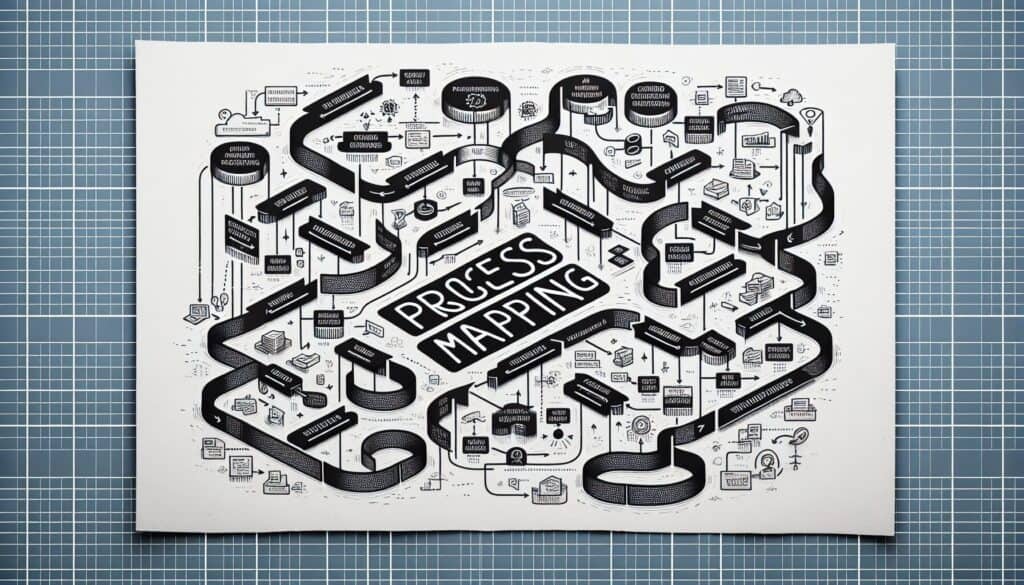To visually represent the sequence of activities, decisions, and information flow within a process to understand its current state and identify areas for improvement.
- 方法: 工程, 质量
流程制图

流程制图
- 业务流程重组(BPR), 持续改进, 精益制造, 流程改进, 流程制图, 工艺优化, 项目管理, 质量管理, 价值流映射
目标
如何使用
- Involves identifying all steps in a process, who performs them, and how they connect, then creating a diagram (e.g., flowchart, swimlane diagram) using standardized symbols.
优点
- Provides a clear visual understanding of complex processes; Helps identify bottlenecks, redundancies, and inefficiencies; Facilitates communication and collaboration among stakeholders; Forms a baseline for process improvement.
缺点
- Can be time-consuming for complex processes; Static representation may not capture dynamic process variations; Requires active participation from process owners and stakeholders for accuracy.
类别
- 精益西格玛, 制造业, 解决问题, 项目管理, 质量
最适合:
- Understanding existing workflows, identifying improvement opportunities, standardizing processes, and training.
Process mapping is widely utilized across various sectors, including manufacturing, healthcare, finance, and software development. In manufacturing, it can be employed during the design phase of production systems, enabling teams to visualize the entire manufacturing workflow from raw material procurement to final product delivery, helping to identify potential inefficiencies and areas for automation. In healthcare, process mapping is often initiated by quality assurance teams to visualize patient care paths, thus improving patient outcomes and ensuring compliance with regulatory standards. In the finance sector, process maps are useful for documenting compliance procedures and internal controls, ensuring that all team members understand their roles and responsibilities in maintaining regulatory standards. During project management phases, cross-functional teams collaborate to create these diagrams, ensuring that all stakeholders have a shared understanding of workflows. Training initiatives also benefit significantly, as onboarding new employees with visual aids aids retention and provides clarity, reducing training time. Various tools can be employed for creating diagrams, including software like Microsoft Visio, Lucidchart, or specialized process mapping tools that enhance collaboration and allow for continuous updates as processes evolve. The visualization of workflows through process mapping empowers teams to continuously refine operations, supports 变更管理 initiatives, and enhances overall organizational efficacy.
该方法的关键步骤
- Identify the process boundaries, defining the start and end points of the process.
- List all steps involved in the process in sequential order.
- Assign roles and responsibilities to individuals or teams for each step.
- Outline connections and interactions between steps to display dependencies.
- Select appropriate standardized symbols and notation for the diagram.
- Create a visual representation of the process using the chosen diagram type.
- Validate the process map with stakeholders for accuracy and completeness.
- Identify areas of redundancy, bottlenecks, or inefficiencies within the map.
- Document any recommended changes and improvements based on findings.
- Update and maintain the process map regularly to reflect ongoing changes.
专业提示
- Involve cross-functional teams during the mapping sessions to ensure diverse perspectives and a comprehensive understanding of workflows.
- Regularly review and update process maps to reflect changes in practices, technologies, or organizational structure, maintaining relevance and accuracy.
- Leverage process mapping software for advanced features like version control, collaboration tools, and integration with other project management systems to enhance usability.
历史背景
1949
1950
1950
1960
1960
1960
1960
1940
1950
1950
1958
1960
1960
1960
1960
(如果日期不详或不相关,例如 "流体力学",则对其显著出现的时间作了四舍五入的估计)。















相关文章
制造运营管理(MOM)
制造执行系统(MES)
生产控制计划
人工测试
手动搬运评估表 (MAC)
手动任务风险评估工具(ManTRA)